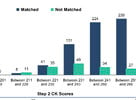- Joined
- Apr 29, 2013
- Messages
- 486
- Reaction score
- 693
The University of Utah General Surgery Residency receives over 1,200 applications for 6 categorical spots each year.
The program employs a screening process, followed by a secondary review for potential alignment of interest between the applicant and the program, followed by a holistic review of approximately 500-550 applications for possible interview selection.
The screening parameters include: USMLE Step 2 scores > 240 and graduation from medical school within the previous 2 years. The secondary review includes, but is not limited to, applicant interest in a 6-7 year residency program and relevant work, research, leadership and life experience.
Application Checklist
The program employs a screening process, followed by a secondary review for potential alignment of interest between the applicant and the program, followed by a holistic review of approximately 500-550 applications for possible interview selection.
The screening parameters include: USMLE Step 2 scores > 240 and graduation from medical school within the previous 2 years. The secondary review includes, but is not limited to, applicant interest in a 6-7 year residency program and relevant work, research, leadership and life experience.
Application Checklist

